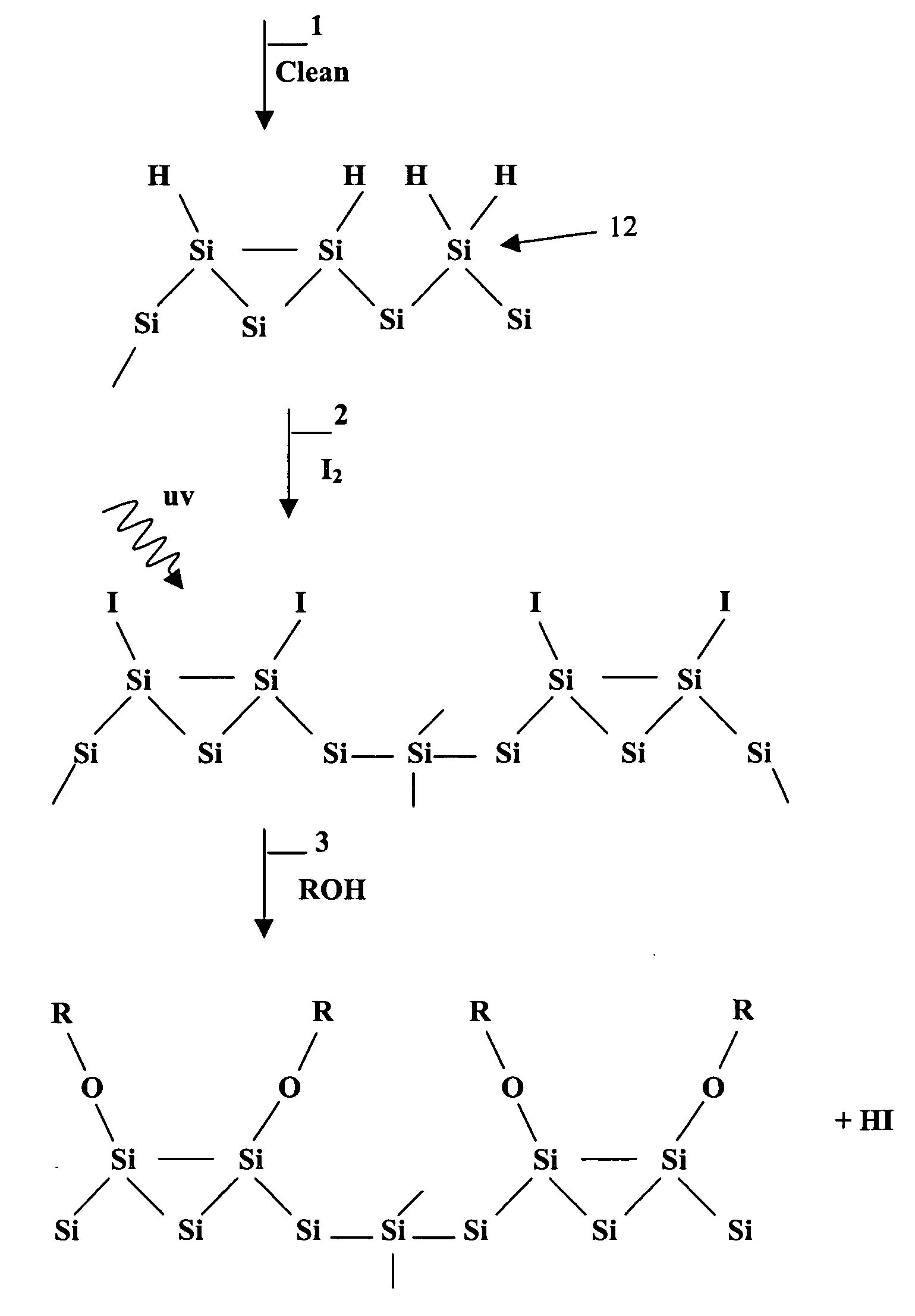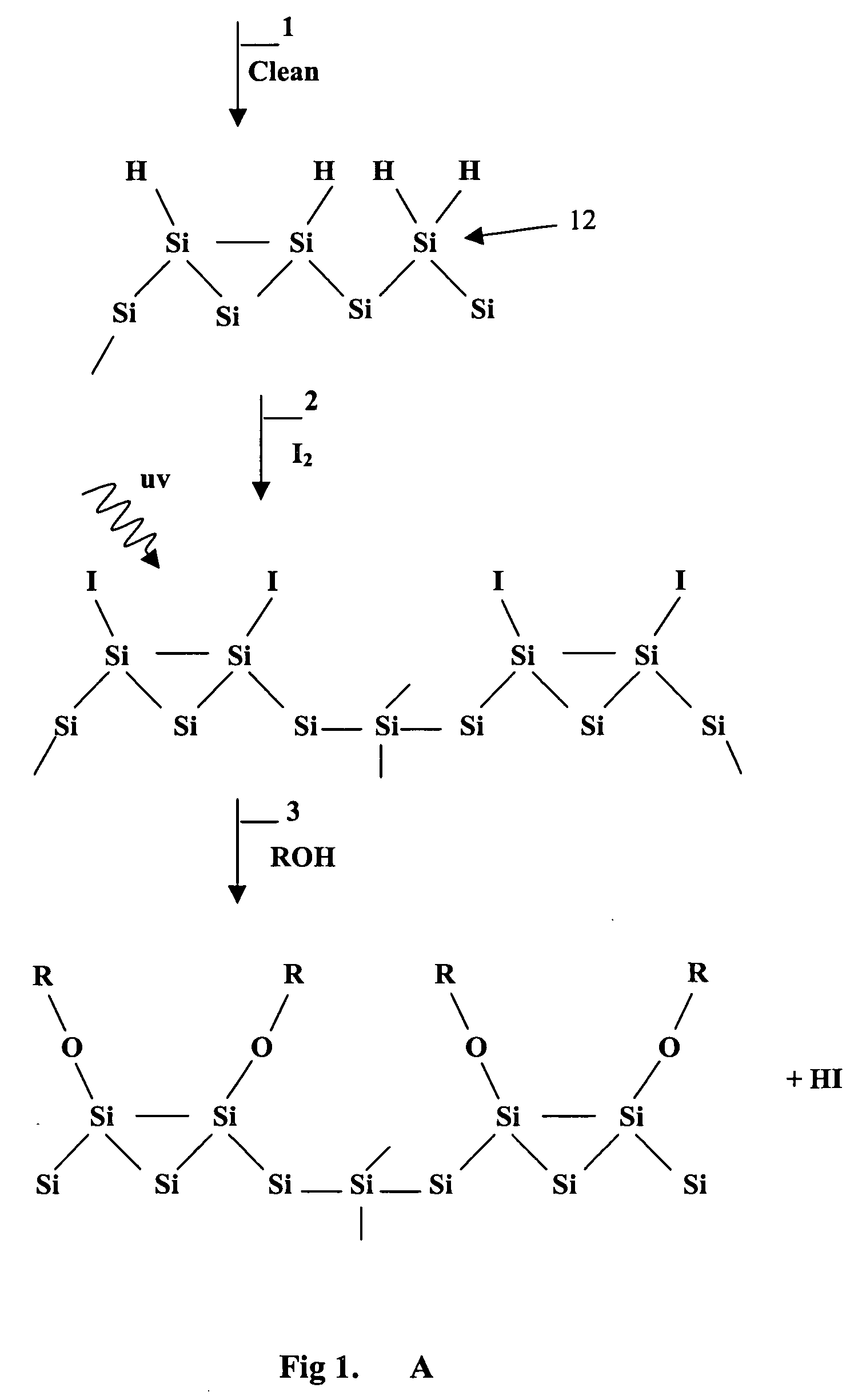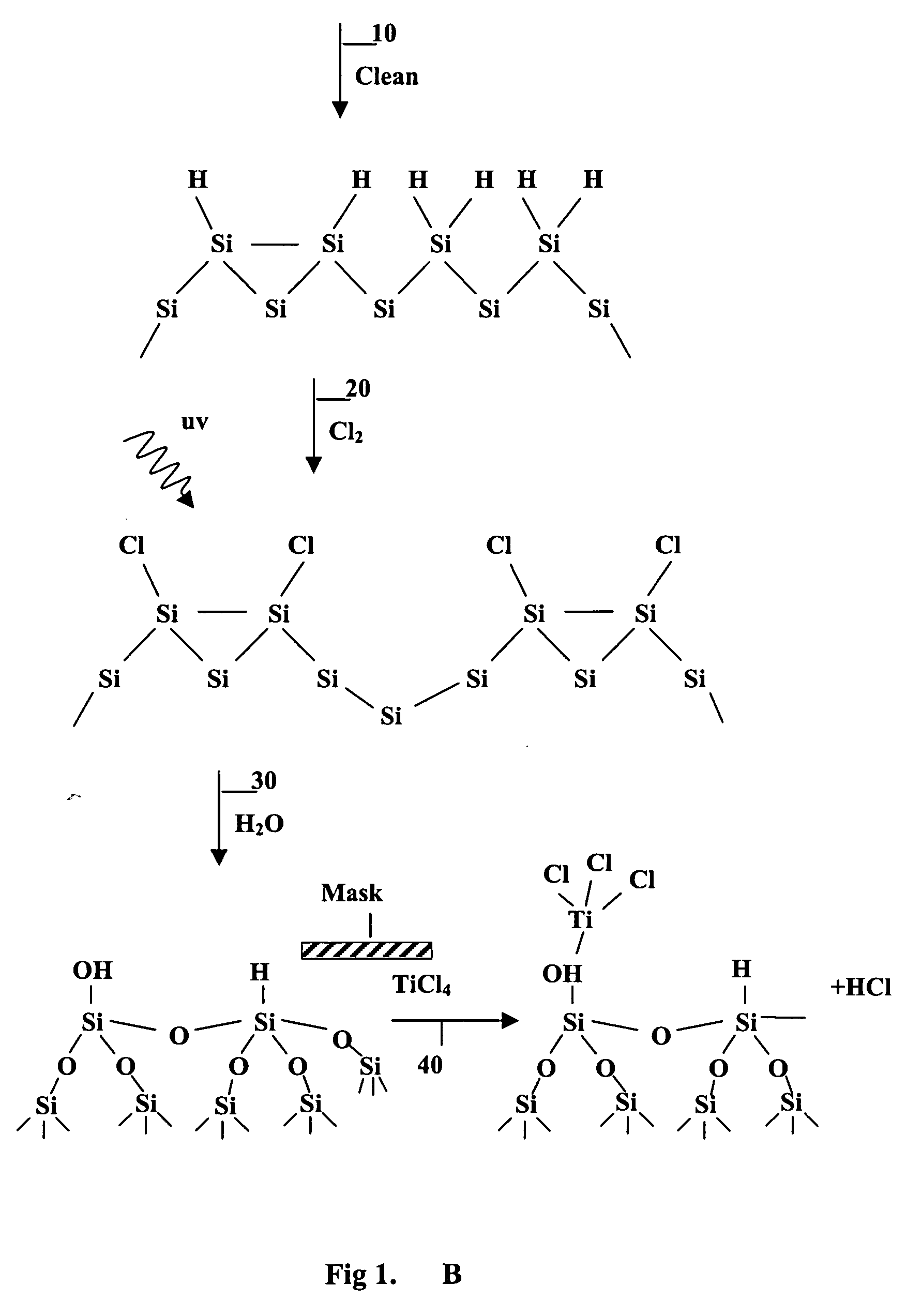Surface manipulation and selective deposition processes using adsorbed halogen atoms
a technology of halogen atoms and selective deposition processes, which is applied in the direction of chemical vapor deposition coating, coating, metallic material coating processes, etc., can solve the problems of high environmental and economic cost associated with this manufacture, high cost of materials and energy, and drastic change in device performance, so as to reduce environmental impact, reduce processing costs, and save process steps
- Summary
- Abstract
- Description
- Claims
- Application Information
AI Technical Summary
Benefits of technology
Problems solved by technology
Method used
Image
Examples
example 1
Methoxy Barrier
Removal of Oxide Layer
[0072] Hydrogen-terminated Si(100) samples (p-type 38-63 Ohm-cm, 14 by 15 mm) were prepared by a degreasing step using an isopropyl alcohol wipe followed by a 10 minute treatment in a Class 10 grade 1:1 96% H2SO4: 30% H2O2 solution followed by an ultra-pure water rinse to remove organic contamination and chemically oxidize the surface. The resulting oxide layer was then removed by a 5-minute treatment in a 1:100 49% HF:H2O solution. Samples were rinsed in ultra-pure water and blown dry under a stream of N2 gas. Samples were then mounted onto stainless steel transfer pucks and loaded into the vacuum system.
Methoxy Passivation (with and without I2)
[0073] Methoxy passivation was prepared by two different methods; direct adsorption of methanol on hydrogen terminated silicon, or by a two-step iodination followed by the substitution of methanol onto the surface. Iodine terminated samples were prepared with 10 minute exposures to 0.5% I2 (Aldrich ...
example 2
Thermal and UV-Initiated Adsorption of Iodine on Si(100) and Si(111)
[0090] The photochemistry reactor module on the RCA was used to expose samples to iodine with and without UV light. The in situ gas phase surface preparation capability of the RCA system enables samples to be terminated with specific functional groups and subsequently characterized without exposure to ambient, by virtue of vacuum isolation (10−9 Torr) between reactor modules. The purpose of this investigation was to compare UV activated deposition of a halogen atom to thermal deposition. The UV light illuminated both the halogen (e.g., I2) gas phase and the sample surface. Two different crystal faces of Si were studied.
[0091] All samples were degreased using an isopropyl alcohol wipe and then treated in class 10 grade 1:1 96% H2SO4: 30% H2O2 solution for 10 minutes to remove organics and rinsed with ultra-pure water. The oxide layer was removed from Si(100) samples (p-type 38-63 ohm-cm) by a 5...
example 3
Analysis of the Oxygen Containing Layer Resulting from Exposing H2O to a Cl / Si(100) Surface
[0100] A UV-Cl2 process (25° C., 40 sec, 10 Torr, 10% Cl2) saturates Si(100) surfaces with 0.7-0.8 ML of Cl, less than the theoretical saturation coverage of 1 ML for a monochloride surface. A detailed analysis of the chlorinated surface showed that the Cl on the Si(100) surface was bound only as silicon monochloride, SiCl, not silicon di- or tri-chloride, SiCl2 or SiCl3.
[0101] There was a linear relationship between the 0 added and the Cl removed upon H2O exposure (45-100° C., 15-45 min, 520 Torr, 20-230 Torr H2O) of Cl / Si(100) surfaces. FIG. 7 shows the ratio of O added to Cl removed, including both high and low H2O flux experiments as well as two surfaces where the sample was annealed to 700° C. repeatedly to obtain a perfect Si(100) (2×1) dimer surface. The control surfaces were H / Si(100) surfaces exposed to both high and low H2O fluxes. The ratio of O added to Cl removed was in the rang...
PUM
| Property | Measurement | Unit |
|---|---|---|
| Temperature | aaaaa | aaaaa |
| Temperature | aaaaa | aaaaa |
| Temperature | aaaaa | aaaaa |
Abstract
Description
Claims
Application Information
 Login to View More
Login to View More - R&D
- Intellectual Property
- Life Sciences
- Materials
- Tech Scout
- Unparalleled Data Quality
- Higher Quality Content
- 60% Fewer Hallucinations
Browse by: Latest US Patents, China's latest patents, Technical Efficacy Thesaurus, Application Domain, Technology Topic, Popular Technical Reports.
© 2025 PatSnap. All rights reserved.Legal|Privacy policy|Modern Slavery Act Transparency Statement|Sitemap|About US| Contact US: help@patsnap.com



